Picasso’s 12 Most Famous Paintings You Should Know
Pablo Picasso (1881 – 1973) was a Spanish painter, considered by many art lovers to be the greatest artist in history. He was one of the most influential artists of the 20th century. Picasso broke with past conventions and pioneered the Cubist art movement, which revolutionized European painting. Picasso was a prolific artist. In addition to his work in other media, he created around 1,900 paintings during his career. Some of his paintings are among the most expensive ever sold, but his most famous works are often kept in museums.
His masterpieces are not just visually striking; they offer a window into the cultural, social, and personal shifts of his time. This article delves into 12 of Picasso's most famous paintings, each reflecting a different phase in his artistic journey and shedding light on the genius of one of history's greatest artists.
Les Demoiselles d'Avignon (The Young Ladies of Avignon), 1907
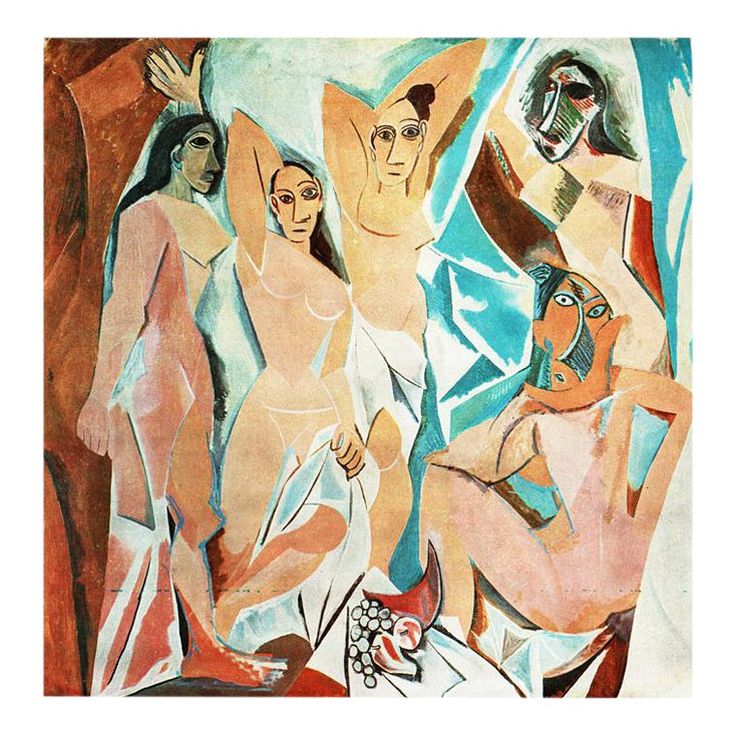
Originally titled Le Bordel d’ Avignon (The Brothel of Avignon), the masterpiece is considered one of the most influential paintings of the 20th century. Because it played a significant role in the development of both Cubism and Modern Art. This was a radical departure from traditional European painting.
Picasso used different styles to depict each figure in the painting with the heads of the women holding the curtain in the upper right being the most strict Cubist element. The painting was controversial not only because of its radical style but also subject matter.
The painting was first shown to the public in 1916, the title was changed to lessen its scandalous impact. The Avignon in the title of the work refers to a street in Barcelona that was famous for its brothels. The work depicts five girls in a confusing confrontation. They are shown with angular and disjointed body shapes, the two figures on the right are shown with African mask-like features. Les Demoiselles d'Avignon had a largely profound influence on Modern art.
Les Demoiselles D’ Avignon is now housed and displayed at the Museum of Modern Art, New York, USA.
Le Rêve (The Dream), 1932
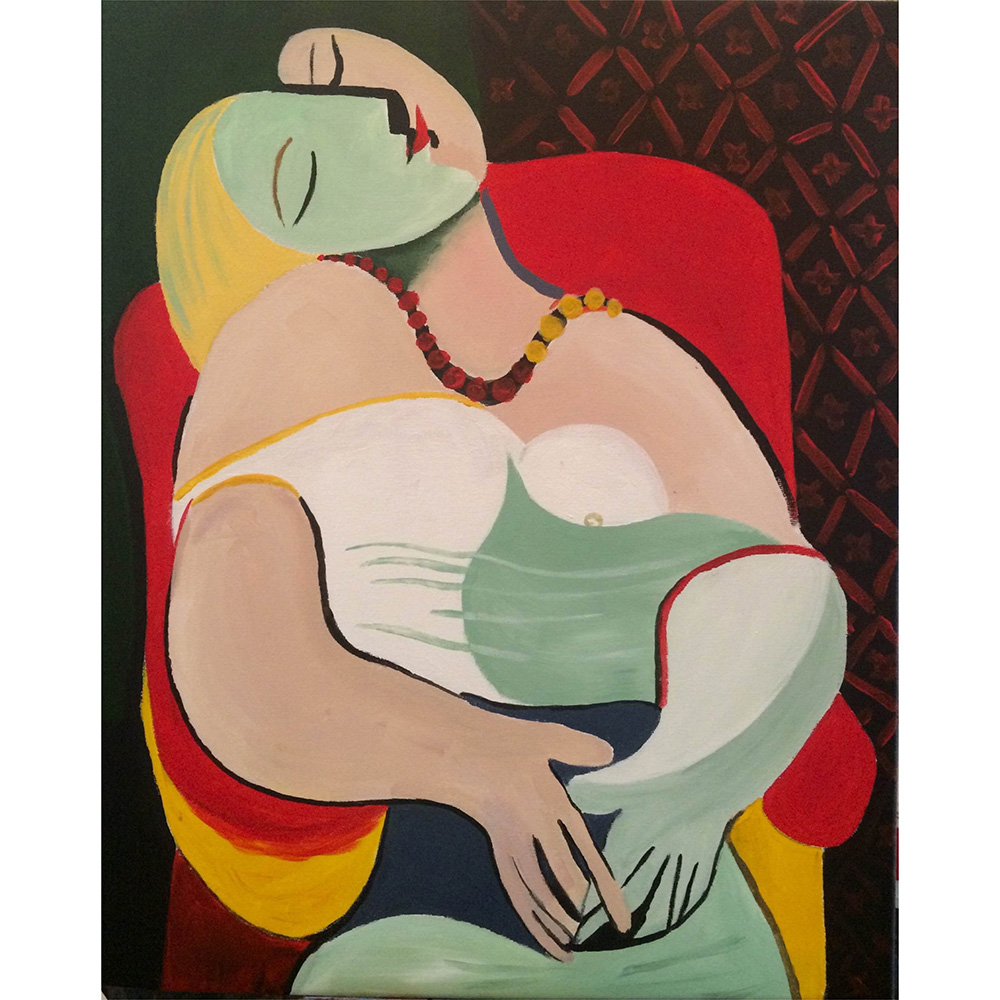
This painting also depicts Marie-Thérèse Walter. Unlike his later lover Dora Maar, whom Picasso often depicted as tortured or threatened, Marie-Thérèse often appears blonde bright in his paintings.
Picasso created many works with erotic elements. So, the erotic content of this famous painting has often been noted by critics. They point out that Picasso painted an erect penis, perhaps a symbol of himself, on the upturned face of his 22-year-old model.
In March 2013, Le Rêve was sold at a private auction for $155 million, making it the fifth most expensive painting ever sold at the time. As of 2016, the price was the second highest price ever paid for a Picasso painting after Les Femmes d'Alger (Women of Algiers), which sold for $179.4 million in May 2015.
The work is now in the private collection of Steven A. Cohen.
The Soup, 1902
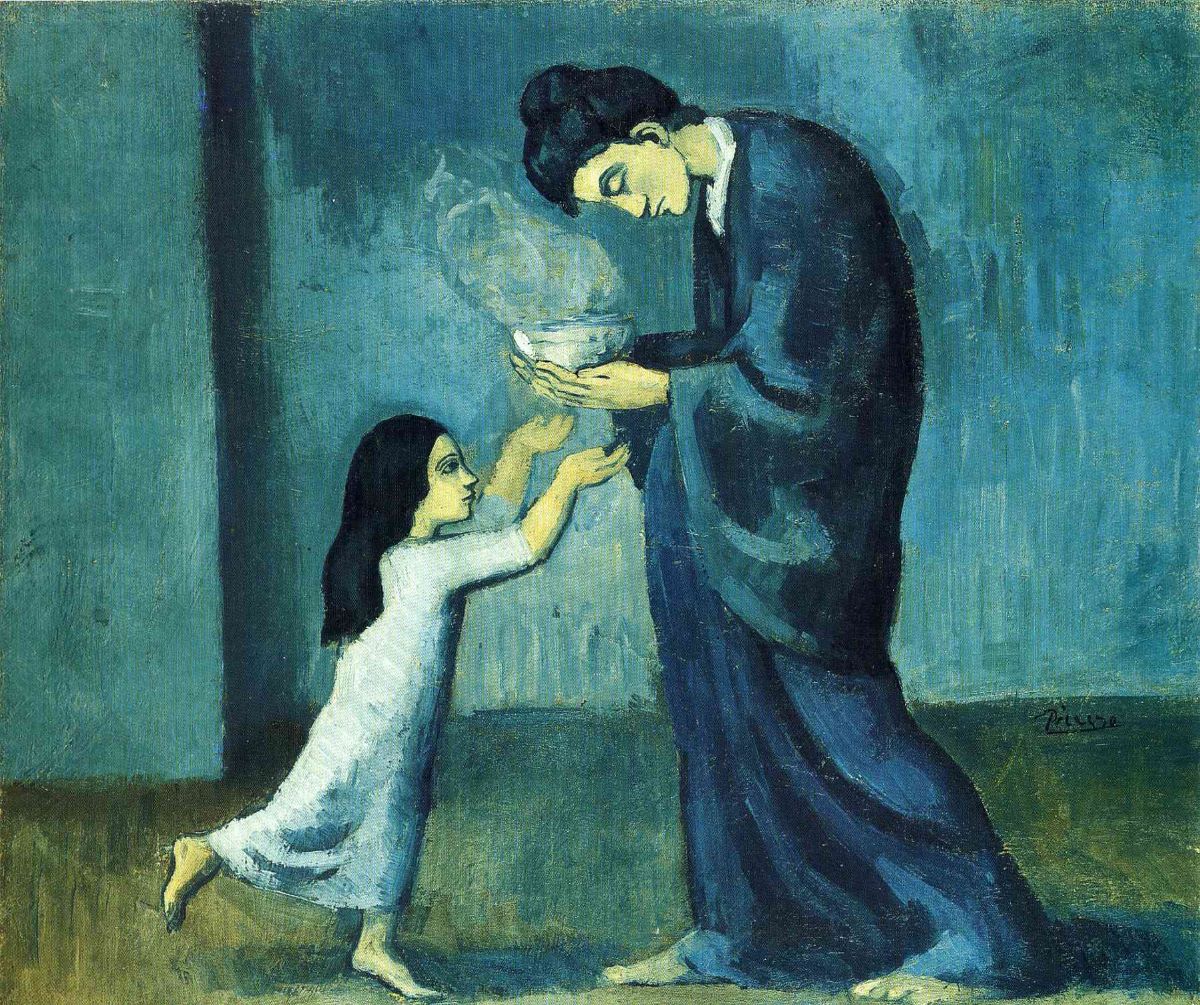
Considered by many to be Picasso's most famous painting, The Soup was painted while he was struggling with poverty. Although the artist had enjoyed great success the previous year, he quickly ran out of money and was once again thrust into poverty. In this painting, Picasso reflects on his experiences while visiting a women's prison. His inspiration for the painting was the murals painted by Pierre Puvis de Chavannes inside the Pantheon. Like one of the murals, this one also shows a woman helping another to escape starvation on the streets.
Guernica, 1937
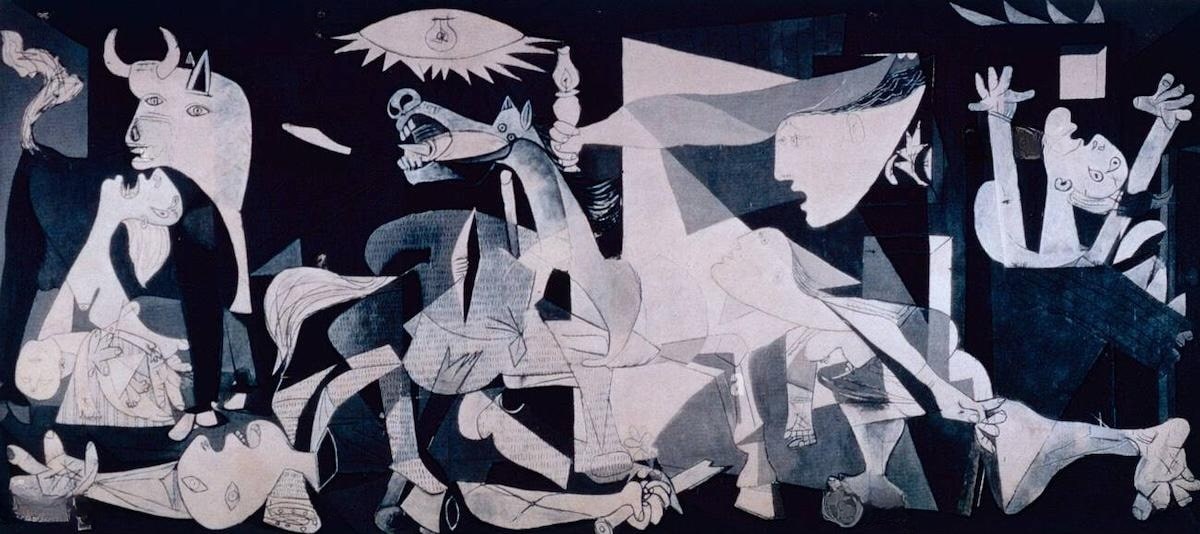
Guernica is a town in northern Spain. On April 26, 1937, during the Spanish Civil War, Guernica was bombed by Nazi and Fascist Italian warplanes at the request of Spanish nationalists. Picasso created this masterpiece in response to the bombing of Guernica. It drew worldwide attention to the Spanish Civil War and is considered one of the most powerful anti-war paintings in history.
There have been many interpretations of Guernica since its creation. On the left side of the painting, a wide-eyed bull stands above a woman grieving over a dead child in her arms. The center is dominated by a horse in agony as if struck by a weapon. Below the horse is a dismembered soldier while to its right is a frightened female figure who appears to have flown into the room through a window. From the right, a frightened woman staggers toward the center. The two main elements in the painting, the bull and the horse, are important figures in Spanish culture.
Guernica is Pablo Picasso's most famous painting and is considered one of the most brilliant works of art ever created.
The Guernica is currently in the Reina Sofia Museum, Madrid, Spain.
Girl before a Mirror, 1932
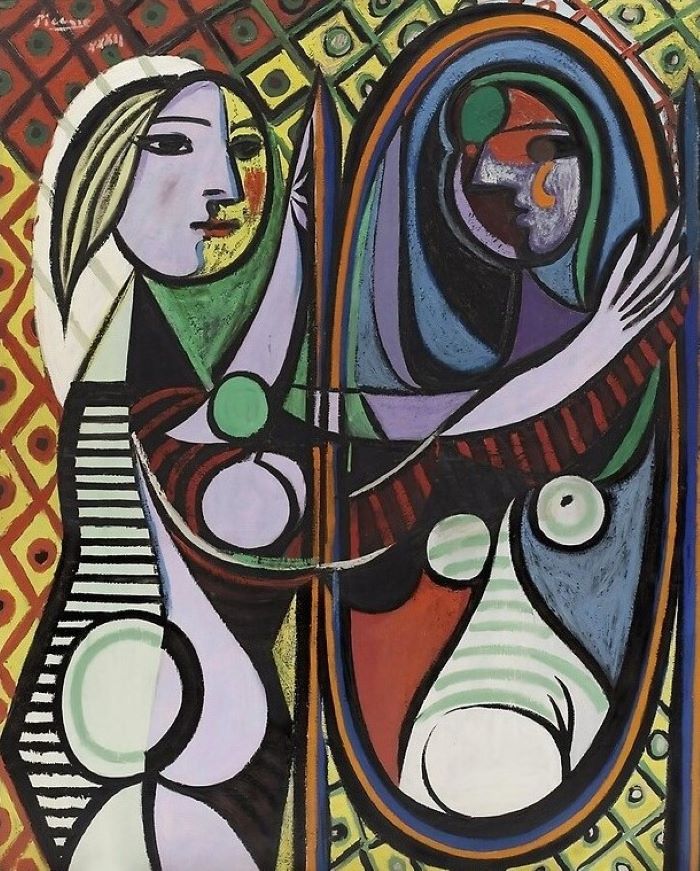
This painting depicts Marie-Thérèse Walter, Pablo Picasso’s mistress and model from 1927 to about 1935. The young Marie-Thérèse was one of his favorite subjects in the early 1930s. Girl before a Mirror depicts her as beautiful and made-up on the left side; while on the right side, her face is dark, her eyes are round and hollow, her strong feminine body is twisted and contorted.
The painting is famous for its varied interpretations. Some critics see it as a representation of Walter's daytime self and her nighttime self. Others see it as a scene of Walter facing her death by looking into a mirror that hints to her of her ultimate fate. It may also allude to her transformation from an innocent girl to a worldly woman aware of her own beauty.
The work is currently on display at the Museum of Modern Art, New York, USA.
La Vie (Life), 1903
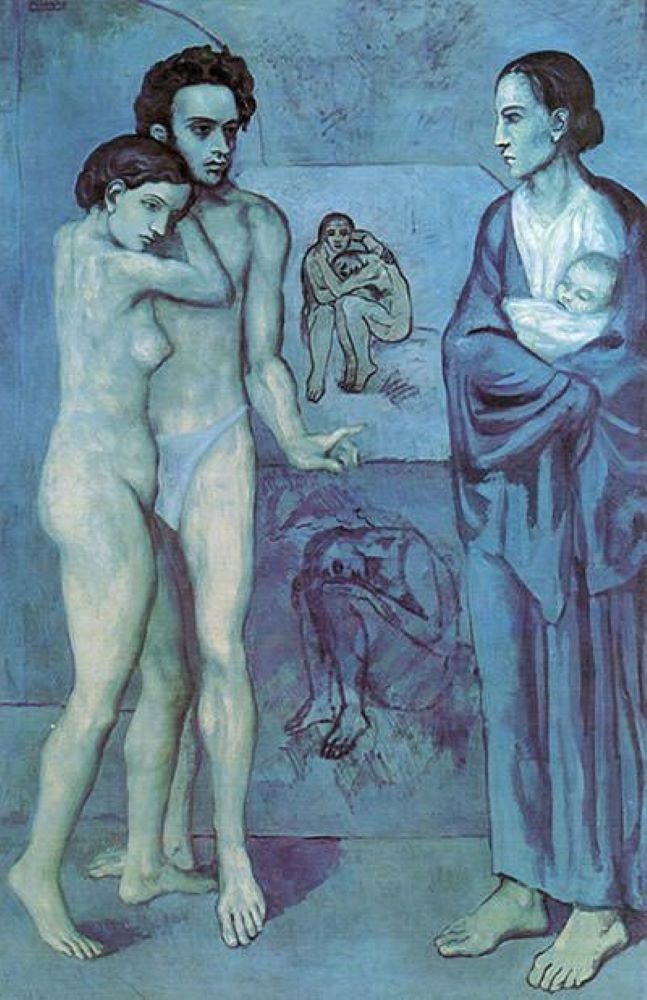
The Blue Period is a term used to refer to the entire body of work by Pablo Picasso between 1901 and 1904. The paintings of this period are essentially monochrome, with shades of blue and blue-green.
The Blue Period, which is often characterized by mourning themes, was influenced in part by the death of Picasso's close friend, Carlos Casagemas. Casagemas was an art student and poet who shot himself over unrequited love for the model of an artist named Germaine Pichot. Along with "The Old Guitarist", "La Vie" is considered the pinnacle of Picasso's Blue Period. The painting depicts a nude couple facing a mother holding a child. The male figure in the painting is a portrait of Carlos Casagemas, who was depicted in several posthumous portraits by Picasso.
The work “La Vie” is currently on display at the Cleveland Museum of Art, USA.
Figures at the Seaside, 1931
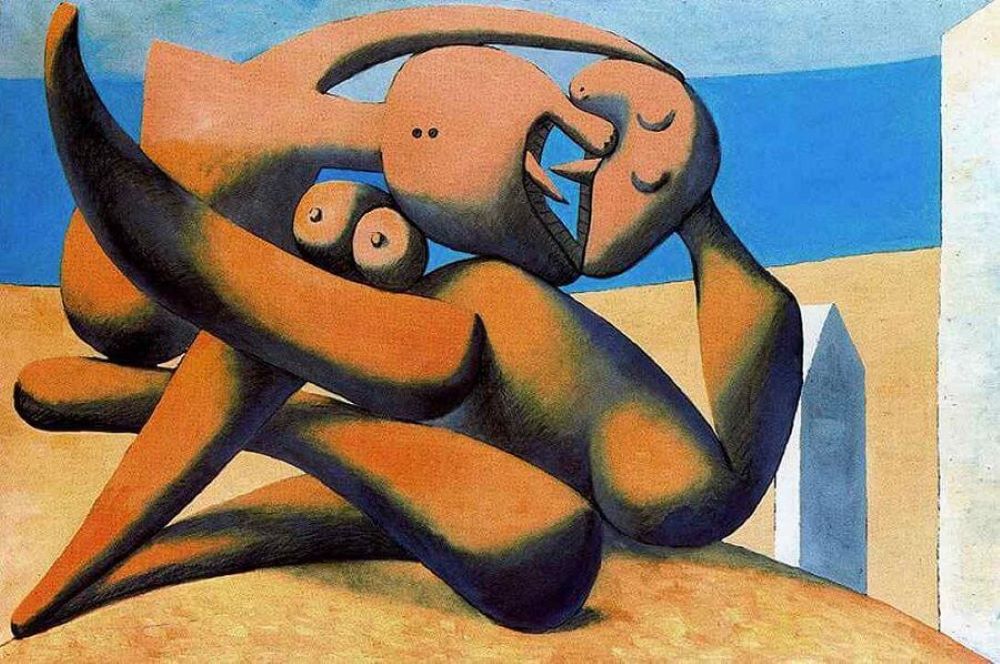
In the summer of 1931, Picasso visited the French Riviera and painted a series of beach scenes, one of which is this one. Figures at the Seaside is said to have been inspired by the artist’s relationship with a 19-year-old model and his deteriorating relationship with his then-wife, Olga.
This is one of Picasso’s famous paintings that skillfully demonstrates Pablo Picasso’s style with the way he clearly implemented intricate details. This painting depicts two praying mantis-headed creatures sitting together. This painting was quite popular with the Surrealists, mainly because of the animal’s habit of eating its mate after copulation or the way it creates another visual metaphor.
The Old Guitarist, 1904
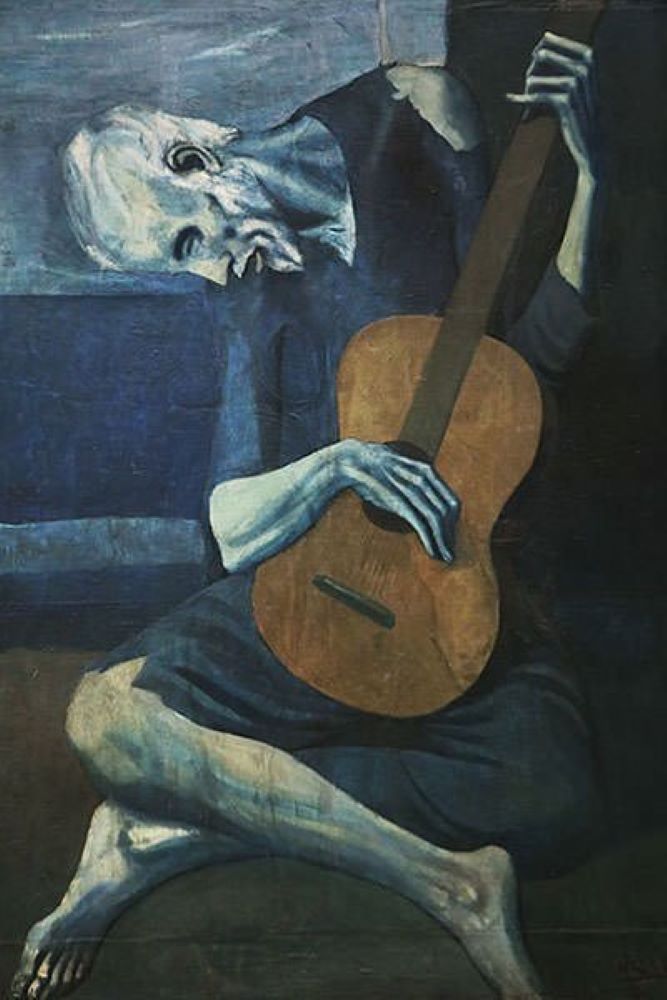
"The Old Guitarist" was painted by Picasso during his Blue Period (1901 – 1904), which stemmed from his struggles with poverty and the death of his close friend Casagemas. The painting depicts a hunched and blind man holding a large guitar. The blue palette adds to the melancholy and highlights the tragic, sorrowful theme.
In 1998, researchers used an infrared camera to discover a young mother sitting in the center of the composition, reaching out her left arm to her kneeling child on the right and a calf or lamb to the mother's left. Although Pablo Picasso later dismissed his Blue Period works as “nothing but sentimental”, they were still extremely popular, with The Old Guitarist being the most famous of them.
This work is now housed at the Art Institute of Chicago, USA.
Large Nude in a Red Armchair, 1929
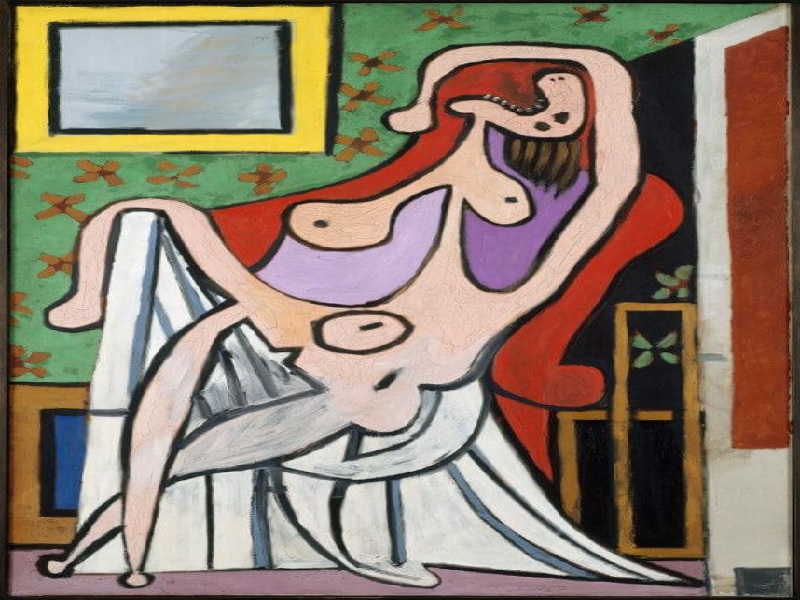
Housed in the Merill Collection, Large Nude in a Red Armchair is said to be influenced by surrealism and is a portrait of his first wife, Olga. Picasso had a total of seven serious relationships throughout his life, all of which caused him some degree of trauma, including this one.
Olga became bitter towards the artist after their relationship ended. You can see the effects of such trauma can be clearly seen in Pablo Picasso’s paintings. While she had previously been portrayed as an elegant and sentimental woman, from this point, her palette shifted to more saturated, muted tones.
That said, as recently as 2012, this painting was vandalized but was quickly restored by the authorities.
Three Musicians, 1921
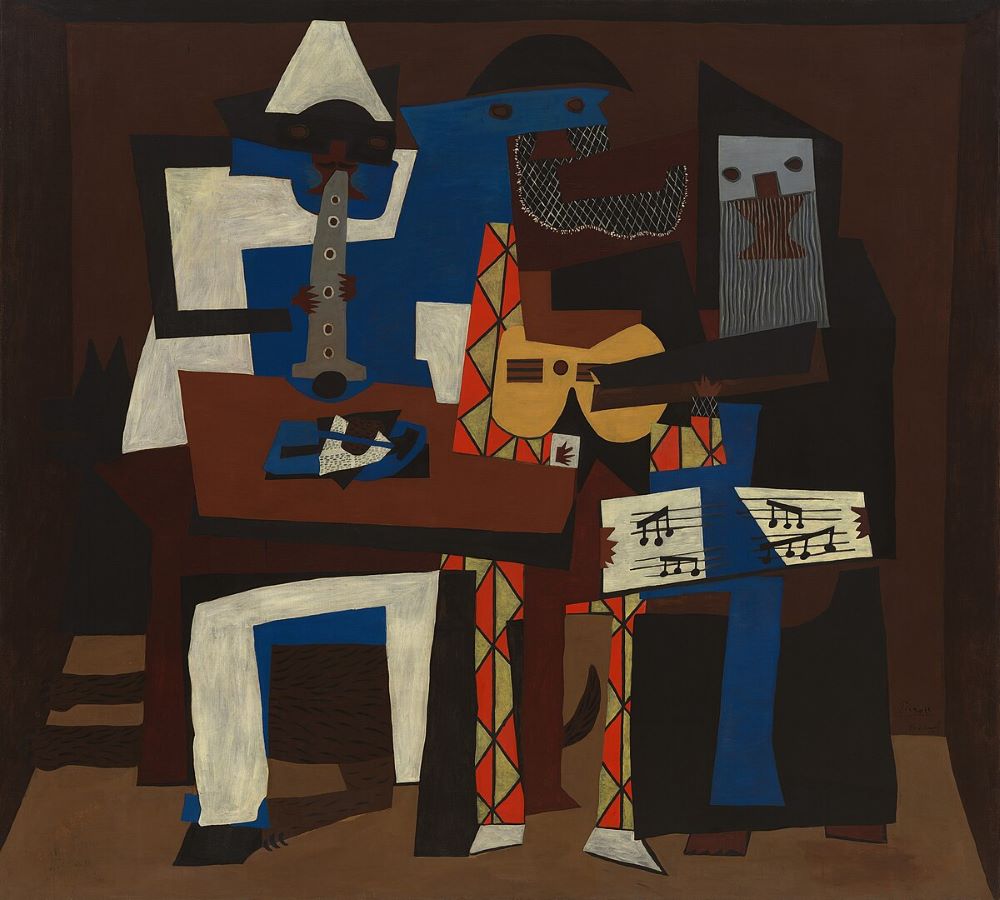
With Georges Braque, Pablo Picasso pioneered Cubism - an early 20th-century art movement in which artists depicted subjects from multiple perspectives. Synthetic Cubism is the second phase of the movement, characterized by the use of more colors, simpler lines, shapes. It also introduces a wider range of materials, such as cut-out paper, into painting.
This painting is a prime example of the Synthetic Cubist style. It depicts a Harlequin, a Pierrot, and a monk, often thought to be Picasso, his friends the poet Guillaume Apollinaire, and Max Jacob. The Three Musicians is not only among Picasso's greatest masterpieces but also one of the most famous works in Synthetic Cubism.
The work is currently housed at the Museum of Modern Art, New York, USA.
Family Saltimbanques, 1905
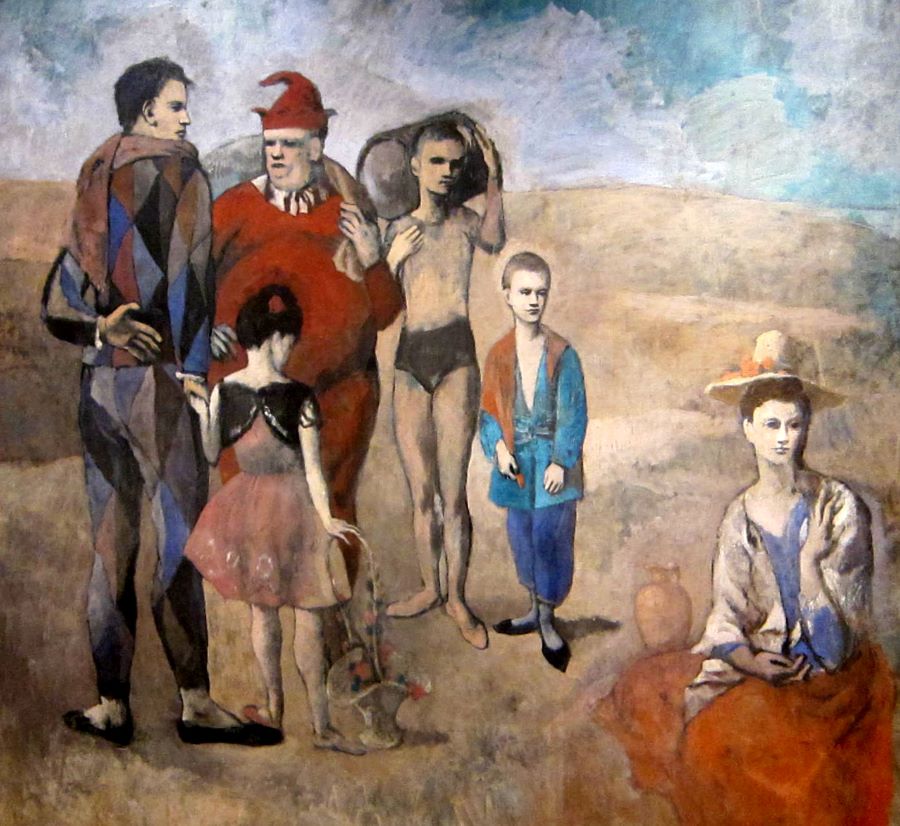
The Rose Period is a term used to describe Pablo Picasso’s artworks from 1904 to 1906. It followed his somber Blue Period and marked the beginning of his stylistic experiments with primitivism. Picasso’s Rose Period paintings are often colorfully upbeat, with depictions of circus performers, acrobats, and clowns. Family Saltimbanques depicts six circus performers in a deserted landscape.
The word “saltimbanco” comes from the Italian word for street performers. Critics have suggested that this painting is a group portrait of Picasso and his circle, who are symbolized as poor, independent, and isolated. The Saltimbanques is Picasso’s most famous painting of the Rose Period. It is currently on display at the National Gallery of Art, Washington, DC, USA.
The Weeping Woman, 1937
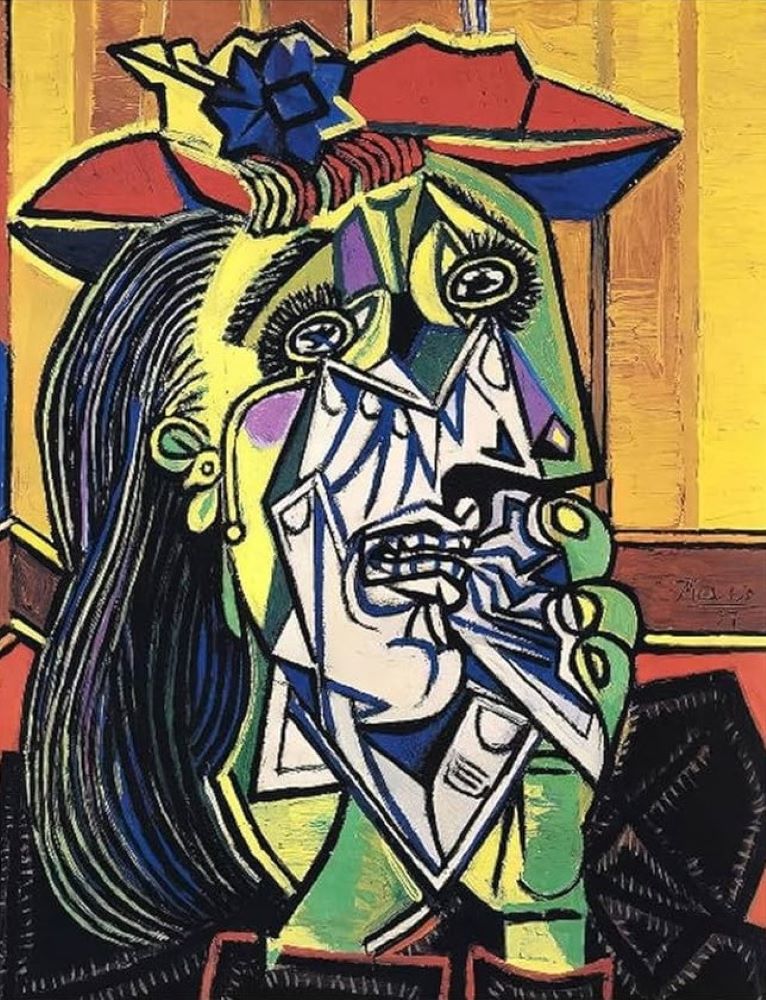
In his masterpiece Guernica, Pablo Picasso depicted a weeping woman holding her dead child. He created several portraits based on this figure, culminating in this painting, the final and most elaborate of the series.
The model in the painting is French photographer and painter Dora Maar, his lover from 1936 to 1944. Maar was one of the most influential figures in Picasso's life during their relationship and was also his main model.
Picasso brilliantly used distorted images, strategically placed tears, chattering blue teeth, and piercing black eyes to depict the pain, horror felt by the subject in the portrait. In addition to being the most famous work in the Weeping Woman series, this portrait is also Picasso’s most famous portrait of Maar.
This was a time in his life when Picasso became more sympathetic to the downtrodden and painted several paintings with the poor, sick, unfortunate as his subjects. The artist’s empathy came from his experience of being penniless a few years before painting it.
“The Weeping Woman” is preserved at the Tate Modern, London, England.
Skilltrans introduces for you some related courses to deepen your knowledge. Please click on the course name below to learn more:
Drawing and Colouring: Birds and Flowers (Art as Meditation)
Nature influences art in many we can't imagine art without nature. As it is the source of inspiration for every artist, its the best way to start learning art through nature. Its a kind of meditation in which we relate ourselves with the beauty of nature. When you indulge yourself in activities related to nature you feel calm and relaxed.
In this course you will learn to make beautiful leaves, flowers and exotic and beautiful birds which will not only enhance your painting.
Painting in the loose style with watercolors is easily one of my favorite things to do. Learn how to use simple brushstrokes to create six different flowers: lavender, lilac, hibiscus, cherry blossom, calla lily, and magnolias. So get ready to let loose with your brush and apply lots of creative freedom to your paintings.
Character Art School: Complete Coloring and Painting
Whether you want to learn to color and paint characters for games, comics, cartoons, manga, animation and more, this course has you covered. I'm not teaching you a 'method' or a 'way' to color and paint, I'm teaching you to be a fundamentally good character colorist and painter.
Conclusion
Picasso's 12 most famous paintings give you a glimpse into the mind of a unique artist. Each piece reveals a different facet of his journey - his moods, beliefs, and evolving techniques. Knowing Picasso’s paintings is to understand a vital part of art history and to experience the powerful ways that art can inspire across generations.
Art always has many new colors. Let's explore the world of art with Skilltrans by registering for courses.

Meet Hoang Duyen, an experienced SEO Specialist with a proven track record in driving organic growth and boosting online visibility. She has honed her skills in keyword research, on-page optimization, and technical SEO. Her expertise lies in crafting data-driven strategies that not only improve search engine rankings but also deliver tangible results for businesses.



